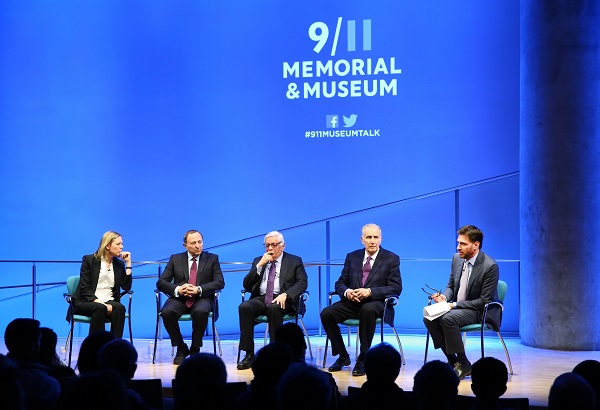9/11 Memorial & Museum Interpretive Guide Reflects on Lessons Learned from the Recovery Effort
9/11 Memorial & Museum Interpretive Guide Reflects on Lessons Learned from the Recovery Effort

As a student interested in museums as places of learning and civic engagement, I was drawn to the 9/11 Memorial & Museum because it is a leader in this field. The Museum’s exhibitions are thoughtfully designed and use technology in interesting ways to engage visitors both young and old. I felt that by working at the Museum as an interpretive guide, I would learn about how museums help people engage with difficult histories and contemporary issues. I’m happy to report I was right!
I usually lead the “Understanding 9/11” Museum Tour, which provides a basic understanding of the history of the World Trade Center, the horrific events of 9/11 and the repercussions of the attacks. I like to tell people how they can get involved because I think many people visit the museum and have a sense of helplessness when hearing about what happened.
A great place to explore ways to help in the Museum is in Foundation Hall. When visitors enter this expansive space, their eyes are usually drawn first to the Last Column, the last piece of structural steel removed from Ground Zero, standing tall in the center. Their necks crane upward as they try to scan its entire height. Next, they notice the words covering its surface: mostly the names of the recovery workers and first responder agencies that contributed to the effort. It’s a wonderful visual of the diversity of people involved in the recovery effort.
Standing in front of the column, I often remind visitors that the people who were helping in the rescue and recovery efforts were people of different walks of life: people you would expect, like firefighters and police officers, and people you wouldn’t expect, like sanitation workers, contractors, “Skywalker” construction workers, engineers, local food vendors, masseuses offering massages to those working on the pile, and even dogs. People offered any help they could at Ground Zero in the hopes of contributing to this grand effort. From what I have read, the camaraderie at Ground Zero is a big part of why the cleanup effort took only nine months instead of the estimated two to three years.
Reminding people that they have the power to affect change whether they are a young kid, a retired teacher, a dog trainer or a masseuse helps them leave the Museum feeling empowered. It’s a reminder to myself too!
To book a tour led by a 9/11 Memorial & Museum interpretive guide, click here.
By Nyantee Asherman, Senior Interpretive Guide, 9/11 Memorial & Museum
Previous Post
Recap: “When Is It Okay? Restarting Sports After 9/11”

Last week, four former sport league commissioners and Mike Greenberg, longtime SportsCenter anchor and current host of ESPN’s "Get Up!”, discussed the challenge of returning to regular season play after the 2001 attacks in a public program at the 9/11 Memorial Museum.
Next Post
Providing for the Common Defense at the 9/11 Memorial Museum

Admiral (Ret.) Gary Roughead and Ambassador Eric S. Edelman, the co-chairs of the National Defense Strategy Commission (NDSC), will participate in a public program at the 9/11 Memorial Museum about the commission’s recent report.